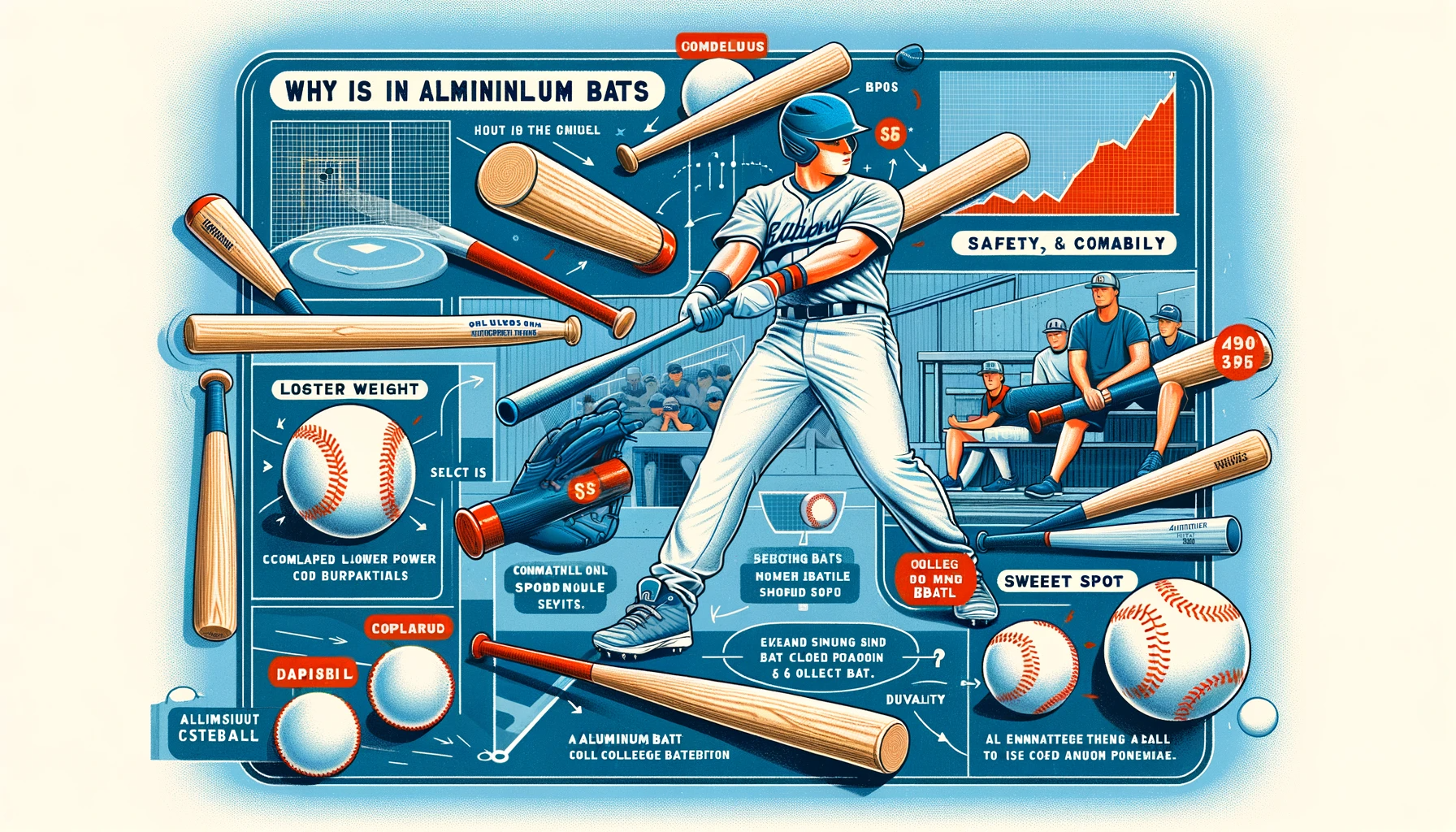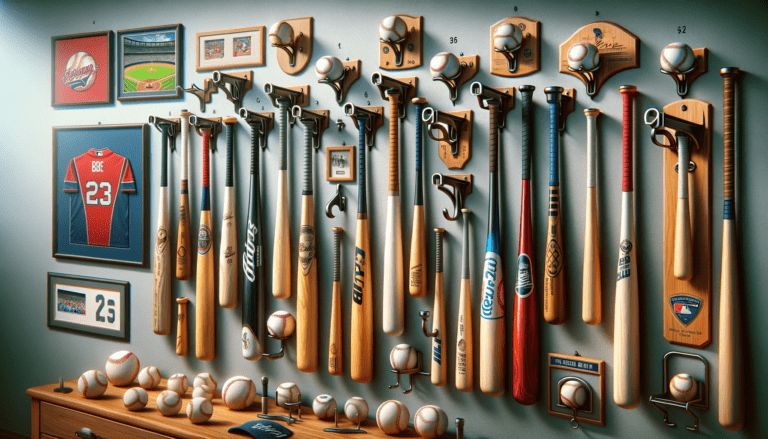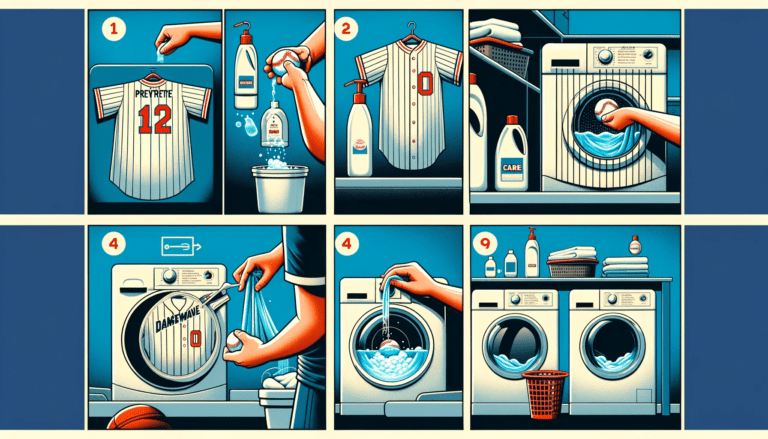Why Do They Use Aluminum Bats in College Baseball?
Ever wonder why college and high school baseball teams use aluminum bats instead of wooden ones?
The main reason is durability and cost-effectiveness. Aluminum baseball bats last longer and don’t break like wooden bats, making them a more budget-friendly choice for college programs.
Besides saving money, aluminum bats also help players hit the ball farther due to their lighter weight and increased power.
In this article, we’ll explore the reasons behind this choice and how it impacts the game.
Key Takeaways
- Aluminum bats are preferred in college baseball for their superior performance, including lighter weight, which allows for higher swing speeds and potentially greater hitting distances.
- Technological advancements in bat manufacturing have not only improved the quality of aluminum bats but also influenced hitting techniques and player development.
- The use of aluminum bats is associated with enhanced safety, as they are less likely to break compared to wooden bats, which has led to the implementation of specific safety standards and regulations.
- Aluminum bats offer significant economic benefits due to their durability and cost-effectiveness, making them a financially viable choice for college baseball teams.
- The transition from wood to aluminum bats in college baseball was driven by a combination of factors, including performance benefits, safety concerns, and economic implications.
Technological Advancements in Bat Manufacturing
The Rise of Aluminum: Material Superiority
Aluminum bats have revolutionized the game of college baseball, offering distinct advantages that have made them the preferred choice over traditional wooden bats.
Their durability and enhanced performance characteristics have played a pivotal role in this shift. Unlike wood, aluminum bats do not break as easily, providing a consistent hitting experience over time.
Key technological improvements in aluminum bat manufacturing include:
- Heat Treatment: Increases bat elasticity for better performance.
- Weight Distribution: Optimizes balance for improved swing speed.
- Customization: Allows for tailored bat designs to fit individual player styles.
- Durability: Aluminum bats withstand more wear and tear, reducing replacement frequency.
These advancements reflect society’s drive for efficiency and convenience, mirroring innovations in other industries.
The transition to aluminum bats is part of a broader pattern of technological progress, where manual processes give way to more sophisticated, reliable solutions.
Innovations in Design and Construction
The evolution of aluminum bats is marked by significant innovations in design and construction, which have revolutionized the game of college and major league baseball together.
These advancements have not only improved the performance of the bats but also their customization to individual players’ styles.
Key improvements include:
- Heat Treatment: Enhancing bat elasticity for superior performance.
- Weight Distribution: Optimizing balance to increase swing speed.
- Customization: Offering tailored designs for a personalized hitting experience.
- Durability: Ensuring bats withstand extensive wear and tear, thereby reducing the need for frequent replacements.
These technological strides mirror broader societal trends towards efficiency and convenience, similar to the evolution from manual car windows to power windows.
The introduction of precise manufacturing processes, such as heat-treating techniques, has led to bats with greater elasticity and a more responsive hitting surface, allowing players to generate more power and speed in their swings.
Impact on Hitting Techniques and Player Development
The switch to aluminum bats in college baseball has necessitated a reevaluation of hitting techniques and player development strategies.
The ‘trampoline’ effect of aluminum bats and balls, where the ball rebounds at a higher speed, has required players to develop quicker reflexes and adjust their timing.
This phenomenon has been studied extensively, highlighting the need for adaptation in the sport.
Key points in the evolution of player development include:
- Mastery of new hitting techniques to capitalize on increased bat speed.
- Enhanced training focused on improving hand-eye coordination and reaction times.
- A strategic approach to hitting, such as making decisions early in the count to take advantage of the bat’s properties.
The transition ban from aluminum bats to metal bats has not only transformed the game’s dynamics but also the skills necessary for players to succeed.
As players like Schult have shown, success in the modern game hinges on the ability to continuously learn and adapt to new equipment and techniques.
Read Also: How Fast Does a Baseball Come Off the Bat
Safety and Performance: Analyzing the Use of Aluminum Bats

Injury Prevention and Player Safety Concerns
The transition from only wooden bats to aluminum bats in college baseball was not only a technological shift but also a move toward enhancing player safety.
Aluminum bats, known for their durability, are less prone to shattering than wooden bats, significantly reducing the risk of injuries from sharp fragments to players and spectators alike.
- Safety Considerations: Despite the increased ball speed of aluminum bats, they offer more consistent performance and control. This consistency aids players in executing more precise hits and mitigates the hazards associated with the unpredictability of bat breaks.
- Regulatory Measures: The adoption of aluminum bats has led to the implementation of stringent regulatory measures and safety standards by organizations such as the NCAA. These regulations aim to balance the performance benefits of aluminum bats with the safety of the players.
Comparative Performance: Aluminum vs. Wood
The ongoing debate about the use of aluminum and wood bats in college baseball hinges on several performance metrics.
Aluminum bats are generally favored by pitchers for their lighter weight and larger sweet spot, which can lead to higher swing speeds and potentially greater distances on hits.
In contrast, wood bats are celebrated for their traditional feel and the skill they demand, as they have a smaller sweet spot and require more precise hitting techniques.
Key performance differences include:
- Aluminum bats enhance the player’s ability to swing faster and hit harder.
- Wood bats offer a classic game experience and are said to improve player technique over time.
While aluminum bats may have a higher initial purchase price, their durability and reduced need for replacement make them a more economical choice in wood bat leagues in the long run.
This aspect is particularly crucial for college programs operating on tight budgets. The choice of bat material can significantly influence both the style and economics of the game at the collegiate level.
Regulatory Measures and Safety Standards
In the realm of college baseball, regulatory measures play a crucial role in maintaining a balance between performance and safety.
The implementation of the BBCOR standard is a pivotal regulatory measure that has redefined the safety standards for aluminum bats.
This standard ensures that non-wood bats perform more like wood bats, which has been instrumental in mitigating the risk of injuries on the field.
Key safety standards include:
- Performance limitations on bats, such as the Ball Exit Speed Ratio (BESR).
- The BBCOR (Batted Ball Coefficient of Restitution) standard, regulates the rebound effect of bats.
These regulations are enforced to ensure that the rebound effect of aluminum bats does not exceed a certain threshold, thereby reducing the risk of injury from high-speed hits.
Compliance with these standards is mandatory for all bats used in NCAA baseball, ensuring a level playing field and the well-being of players.
Read Also: Why Does Little League Use Aluminum Bats
Economic Implications: The Cost Factor in College Baseball

Financial Benefits of Using Aluminum Bats
The shift to aluminum bats in college baseball has been largely driven by their economic advantages.
These bats, while initially more expensive, prove to be more cost-effective over time due to their superior durability.
Unlike wooden bats, which are prone to breaking and require frequent replacement, aluminum bats can withstand numerous impacts and maintain their performance over multiple seasons.
Key economic benefits include:
- A longer lifespan, reducing the need for replacements
- Lower long-term expenses despite higher initial costs
- A significant decrease in replacement frequency
These financial considerations have made aluminum bats a mainstay in college baseball, offering teams the ability to allocate resources more efficiently and reduce equipment expenditures.
Longevity and Durability: Cost-Effectiveness for Teams
The transition from new wood bats to aluminum bats in college baseball has not only been a technological shift but also an economic one.
Aluminum bats, known for their durability, offer a cost-effective solution for college teams operating on tight budgets.
Unlike wooden bats that can break and require frequent replacements each season, aluminum bats can last multiple seasons, reducing the need for constant reinvestment.
In terms of direct cost comparisons, aluminum bats offer a clear economic edge:
- Initial purchase price: Higher for aluminum bats
- Long-term expenses: Lower for aluminum due to durability
- Replacement frequency: Significantly less for aluminum bats
These factors contribute to a more sustainable financial model for college baseball programs, especially when considering the tight budgets many teams operate on.
The longevity of aluminum bats means that the investment pays off over multiple seasons, providing teams with a cost-effective solution to manage their equipment needs.
The Market for Baseball Equipment: Trends and Predictions
The baseball equipment market is a dynamic and evolving sector, with trends and predictions indicating significant growth in the coming years.
The global baseball equipment market size is expected to reach $21 billion by 2028, growing at a steady rate of 5.0%.
This growth is segmented across various product categories, including bats, helmets, equipment bags, gloves, and other related products.
The market’s expansion is fueled by a combination of factors, such as the increasing popularity of baseball in emerging markets, technological innovations in equipment manufacturing, and a growing emphasis on sports and physical education in schools.
Moreover, the rise of online retail platforms has made baseball equipment more accessible to a wider audience, contributing to the market’s growth.
As we look to the future, the baseball equipment market is poised for further expansion, with predictions suggesting a continued upward trajectory.
Manufacturers and retailers alike will need to stay attuned to consumer preferences and technological advancements to capitalize on these opportunities.
The Historical Shift from Wood to Metal
Early Adoption and Resistance
The shift from traditional wooden bats to aluminum bats in college baseball was not an overnight transformation.
The Aluminum Bat Revolution began to gain traction in the 1970s, marking a significant milestone in the sport’s history.
Initially, there was skepticism among purists who valued the classic feel and sound of a wood bat. However, the undeniable benefits of metal bats slowly won over many critics.
- Durability: Aluminum bats were less prone to breaking, offering a more consistent performance over time.
- Performance: Players found that metal bats could hit the ball farther and with more speed.
- Cost-Effectiveness: The longer lifespan of aluminum bats made them a more economical choice for college programs.
Despite these advantages, the transition faced resistance from those who were concerned about the integrity of the game and the potential for increased injuries.
It took years of debate, regulatory changes, and technological improvements before aluminum bats became the standard in college baseball.
The Role of NCAA Regulations
The NCAA has played a pivotal role in the transition from the wooden bat to aluminum bats in college baseball.
Regulations set forth by the NCAA have not only influenced the type of equipment used by college players but also ensured a level playing field across collegiate teams.
The NCAA’s bat performance standards are designed to mimic the performance of wooden bats, thereby maintaining the traditional aspects of the game while embracing modern materials.
Key NCAA regulations include:
- The introduction of the Ball Exit Speed Ratio (BESR) standard, was later replaced by the BBCOR (Batted Ball Coefficient of Restitution) standard.
- Mandatory testing and certification of aluminum bats to meet safety and performance criteria.
- Periodic reviews and updates to the regulations to adapt to technological advancements and safety research findings.
These measures have significantly shaped the game, affecting everything from the pace of play to the safety of the athletes.
The NCAA’s commitment to safety and fairness has been instrumental in solidifying aluminum bats’ place in college baseball.
Cultural Impact on the Sport
The introduction of aluminum bats in college baseball was more than a shift in equipment; it was a cultural pivot that stirred the pot of tradition.
The echoes of wooden bats and the purist approach to the professional baseball players remind us of the sport’s rich heritage.
Yet, the adaptability and willingness to embrace change are what keep the game dynamic and evolving.
- The ‘trampoline’ effect of aluminum bats has necessitated quicker reflexes and adjustments in hitting techniques, influencing player development.
- The market for baseball equipment has expanded, partly due to the accessibility provided by online retail platforms.
This cultural shift has been chronicled in various forms, including literature that explores the history, rivalries, and traditions of major league and college baseball.
The debate between maintaining tradition and fostering innovation continues to be a significant theme in the narrative of the sport.
Conclusion
To wrap it up, colleges choose aluminum bats mainly because they’re tough and more cost-effective than wood bats. This choice helps both college baseball players and programs save money and reduce the hassle of replacing bats often.
Plus, the extra zip the ball gets off an aluminum bat adds a bit of excitement to the game. It’s all about balancing tradition with practical needs and making sure the game stays fun and affordable for college teams.
Frequently Asked Questions
Why did college baseball switch from wooden to aluminum bats?
College baseball transitioned from wooden to aluminum bats due to technological advancements that allowed for better performance, durability, and cost-effectiveness. Aluminum bats also contributed to changes in hitting techniques and player development.
Are aluminum bats safer than wooden bats in college baseball?
There is a perception that aluminum bats are safer than wooden bats due to their durability and the regulatory measures in place to ensure player safety with aluminum baseball bats. However, the safety of aluminum bats in comparison to wooden bats continues to be a topic of debate and research.
How do aluminum bats affect the economics of college baseball?
Aluminum bats have financial benefits due to their durability and cost-effectiveness. Teams save on equipment costs over time, as aluminum bats are less prone to breaking and don’t require frequent replacements like wooden bats.
What are the performance differences between aluminum and wooden bats?
Aluminum bats are lighter, allowing for higher swing speeds and potentially greater distances on hits. They are often lauded for their enhanced performance, especially in the realm of college baseball.
What prompted the initial shift from wood to metal bats in college baseball?
The initial shift from wood to metal bats in college baseball was prompted by the desire to improve performance and safety while also considering economic factors such as cost savings due to the bats’ longevity.
What are the current trends and predictions for the baseball equipment market?
The baseball equipment market is evolving with a focus on innovative designs and materials that enhance performance and safety. Trends suggest a continued preference for durable and cost-effective equipment, with aluminum bats remaining popular in college baseball.







